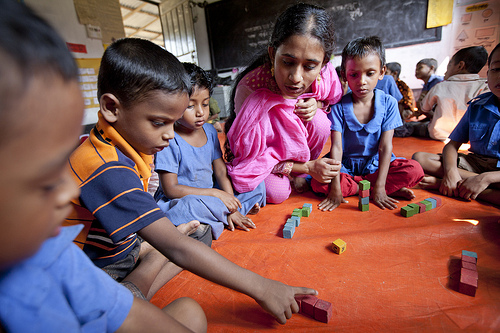 Teaching is never easy but it can definitely be fun! When you’re having fun in the classroom, kids will have fun too and learn something in the process! So ditch your worksheets and give your math teaching SMARTS!
Teaching is never easy but it can definitely be fun! When you’re having fun in the classroom, kids will have fun too and learn something in the process! So ditch your worksheets and give your math teaching SMARTS!
SMARTS is an easy acronym to help identify fun ways to engage kids with math!
Songs–Who doesn’t like a good tune? Songs can help students remember the steps of long division or learn to count by 10s. Songs shouldn’t be complicated or difficult to remember and are often set to familiar tunes. Try skip counting by 4s to the tune of Row, Row, Row Your Boat and you’ll see what I mean!
There are tons of free resources on the web but I love Songs for Teaching and TeacherTube. Other teachers are a great resource when trying to identify fun songs that work (and those that don’t) so turn to colleagues or online communities for teachers like Edutopia or Classroom 2.0. The key is to ditch boring drills and make learning catchy and fun! Research has shown that movement boosts academic performance so get your kids up and moving during songs to optimize fun and learning.
Manipulatives–Use whatever you have around you to make math meaningful! Count pencils to build one to one correspondence, cut sandwiches in quarters to demonstrate fractions and build various sized towers with blocks to teach measurement. Manipulatives help children “see” math and build meaning. Don’t fret if you don’t have access to fancy manipulatives from a learning store–pebbles work just as well as counting bears and you can create fraction tiles from sheets of paper.
Many teachers are afraid to introduce manipulatives because they fear children will fidget and lose focus. You can avoid this problem by establishing clear rules and expectations for Math Investigation and adhering to pre-established behavior plans. Most teachers are surprised to see that the children spend more time on task once manipulatives are introduced because they are engaged!
Art–Are you sensing a pattern of interdisciplinary connections here? Whenever possible, incorporate art projects into your math lessons. Have children create self portraits when studying symmetry, create beaded bracelets to reinforce patterns and draw pictures to illustrate word problems. My students only truly grasped the concept of area after creating pictures from paper mosaic “tiles”. We are trying to turn our children into budding mathematicians and encouraging them to create something always helps!
Recreation–We’re talking about games here! After you introduce a concept, give the children time to practice by playing games as an alternative to workbook practice. Students will have a blast while also getting the practice that they need! A card game of WAR can reinforce greater than/less than, Around the World with flash cards can reinforce math facts and a simple game of dice can reinforce probability. Try to incorporate games into your classroom whenever possible to increase engagement and promote learning!
Technology–Technology is a great tool to increase student engagement regardless of where your classroom is or what it looks like. For some, this may mean interactive white boards while for others this means access to a disposable camera. As more and more students are gaining access to technology in their classrooms, it is important for teachers to use these resources strategically, whether it be one tablet for an entire class or a classroom set of laptops.
Virtual manipulatives can be used to demonstrate place value, spreadsheets can be used to organize and display data and cameras can be used to photograph angles in the community. Incorporating technology helps prepare our students for success outside the classroom and opens the door to a growing library of open education resources available online.
Stories– Make math relatable for your students by placing problems in context through word problems, real life applications or picture books. Become a storyteller and encourage your students to tell stories about math through writing or illustration. Math read alouds can help introduce a math topic, math journals can be used to reflect on learning, and imaginative play can reinforce math in our everyday lives. Set up a grocery store in your classroom and watch math learning come to life!
The goal of teaching SMARTS is to keep math instruction captivating, lively and relevant in your classroom. What tricks do you use to keep math engaging and fun for your students?
Creative Commons Love: Save the Children on Flickr
Written by Shannon Schmidt
